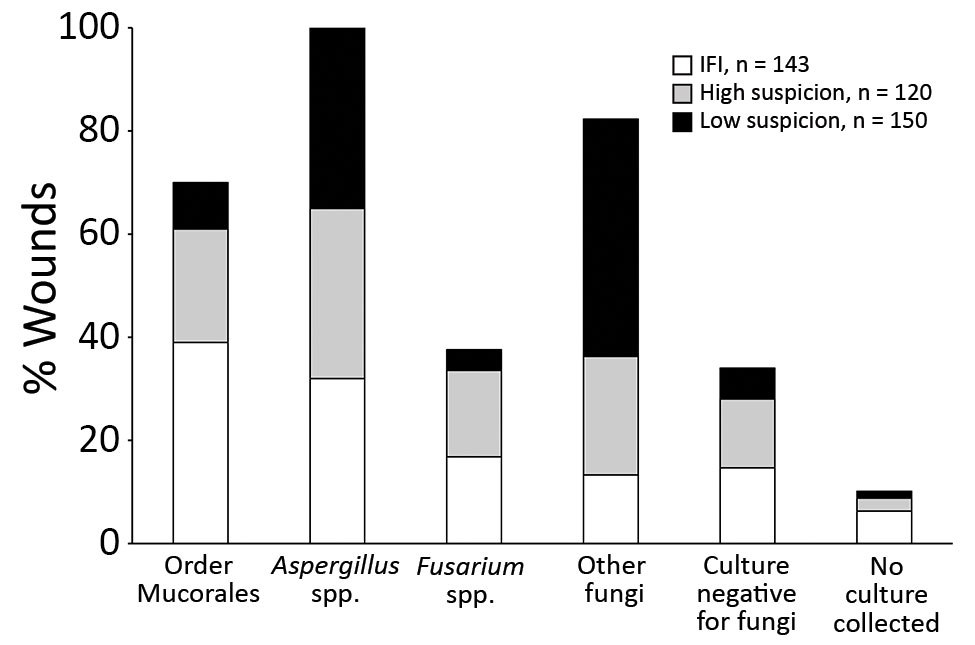Volume 25, Number 9—September 2019
CME ACTIVITY - Synopsis
Classification of Trauma-Associated Invasive Fungal Infections to Support Wound Treatment Decisions
Figure 2

Figure 2. Wound culture mycology distribution, by wound classification, in study of US military patients who had laboratory evidence of fungal infection after battlefield trauma in Afghanistan, June 1, 2009–December 31, 2014. Because wound infections were polymicrobial, organisms are not mutually exclusive for a classification type. IFI, invasive fungal infection; other fungi, filamentous fungi other than order Mucorales, Aspergillus spp., and Fusarium spp.
Page created: August 20, 2019
Page updated: August 20, 2019
Page reviewed: August 20, 2019
The conclusions, findings, and opinions expressed by authors contributing to this journal do not necessarily reflect the official position of the U.S. Department of Health and Human Services, the Public Health Service, the Centers for Disease Control and Prevention, or the authors' affiliated institutions. Use of trade names is for identification only and does not imply endorsement by any of the groups named above.